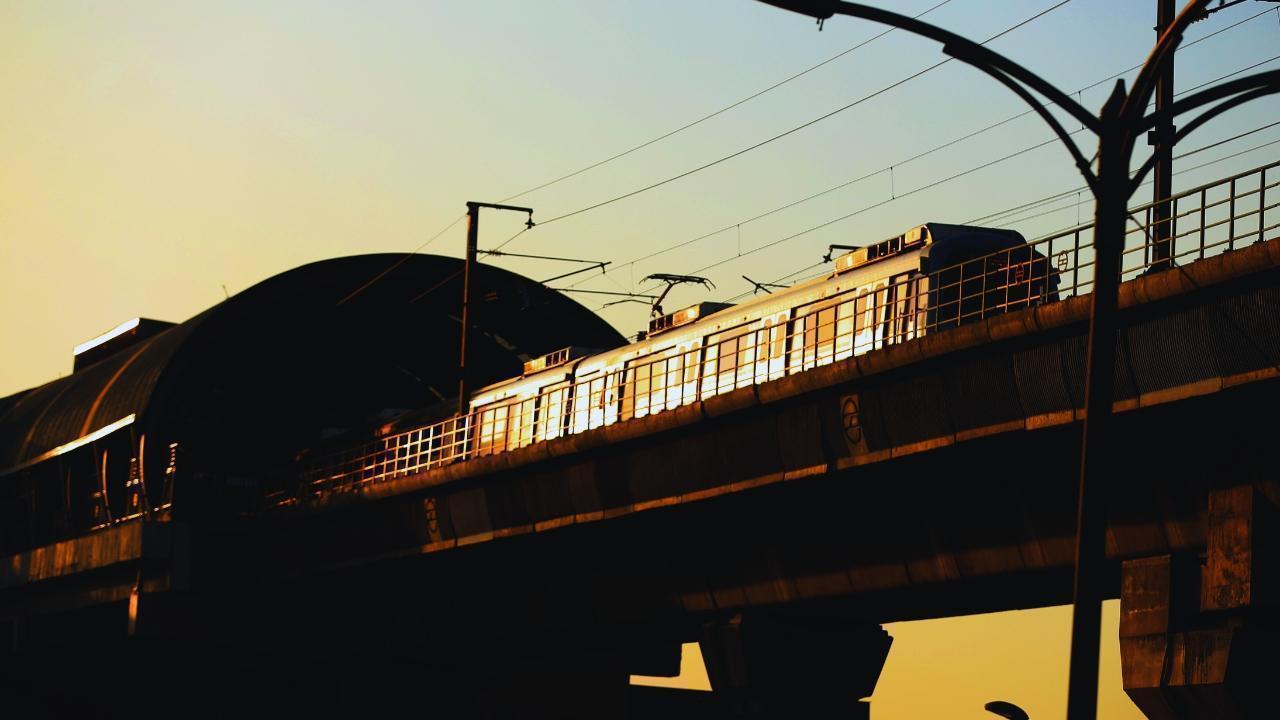
Join 10k+ people to get notified about new posts, news and tips.
Do not worry we don't spam!

Post by : Anis Farhan
Few cities in the world are as synonymous with traffic gridlock as Bangkok. The Thai capital—home to more than 11 million residents—has long struggled with chronic congestion, long commute times, and inefficient public transportation integration. But in 2025, city planners and national leaders are hoping to change that narrative through a major expansion of the metro system.
Bangkok is currently undergoing its largest-ever mass transit buildout, with four new metro lines under construction and three more in the planning phase. These projects aim to add over 150 kilometers of track to the existing network, extending connectivity to underserved suburbs, easing pressure on inner-city roads, and improving links to industrial zones and airports.
At the center of the effort is a strategic vision to transform Bangkok from a car-dominated megacity into a regionally integrated urban transport hub—reducing reliance on private vehicles and making daily commutes more predictable, sustainable, and inclusive.
The 2025 expansion is being led by the Mass Rapid Transit Authority of Thailand (MRTA) in collaboration with the Bangkok Metropolitan Administration (BMA) and several private concessionaires. Among the major projects underway:
Orange Line (East–West): Now partially operational, this 35.9 km line will eventually connect Bang Khun Non to Min Buri, crossing densely populated and congested zones. Completion is expected by late 2026.
Pink Line Monorail: Stretching 34.5 km from Khae Rai to Min Buri, the Pink Line is nearly complete and set to begin trial operations by Q4 2025. It’s aimed at easing traffic on Ramintra and Chaeng Watthana roads.
Yellow Line Monorail: Already partially open, this line connects Lat Phrao to Samrong, acting as a north-south spine along Bangkok’s eastern corridor.
Brown Line (proposed): This newly approved line will connect Nonthaburi to Lam Sali and is expected to break ground by early 2026.
Together, these additions are projected to increase daily ridership on Bangkok’s metro network from 2.6 million passengers in 2024 to nearly 4 million by 2027. Once completed, the network will span over 450 kilometers—placing it among Asia’s most extensive urban transit systems.
Bangkok’s metro expansion is not merely a response to traffic jams—it’s also about economic efficiency, environmental sustainability, and urban equity.
Traffic congestion currently costs Thailand an estimated $2.1 billion USD annually in lost productivity, wasted fuel, and pollution-related healthcare expenses. According to the World Bank, commuters in Bangkok lose an average of 63 hours per year stuck in traffic, with buses and cars averaging speeds as low as 16 km/h during peak hours.
At the same time, rapid suburban growth—driven by housing affordability and industrial decentralization—has increased the need for commuter connectivity from peripheral areas like Pathum Thani, Samut Prakan, and Nonthaburi. Without efficient mass transit, these residents face long, expensive commutes or rely on private cars, further choking the roads.
The metro expansion seeks to decongest arterial roads, reduce carbon emissions, and enable broader access to employment, education, and healthcare by making mobility more reliable and affordable.
Despite the expansion, last-mile connectivity and system integration continue to challenge Bangkok’s transport planners. Unlike cities like Seoul or Tokyo, where transit systems are deeply interconnected, Bangkok’s various rail modes—BTS Skytrain, MRT subway, Airport Rail Link, and monorails—operate under different ticketing systems and fare structures.
Passengers frequently complain of having to buy separate tickets for different lines or walk long distances between interchange stations. This disjointed experience deters some users from fully adopting public transport.
To address this, the BMA has been working on the Common Ticketing System, or “Mangmoom Card,” which aims to allow seamless travel across all public transit platforms. After years of delays, a limited pilot was launched in mid-2025, with full rollout expected by 2026. If successful, it could significantly improve ridership rates and user satisfaction.
In addition, the government is expanding park-and-ride facilities, feeder bus services, and pedestrian-friendly infrastructure to encourage metro adoption in suburban areas where stations are often several kilometers from homes or workplaces.
Financing Bangkok’s transit buildout is a complex undertaking. The total investment for the 2025–2030 expansion phase exceeds THB 1.2 trillion (USD 32 billion). To manage this, Thailand has increasingly relied on public-private partnerships (PPPs)—a model where private concessionaires build, operate, and maintain transit lines under long-term agreements.
For instance, the Pink and Yellow monorails are being developed by Eastern Bangkok Monorail Co., Ltd., a subsidiary of the BTS Group, under a 30-year operating concession. Meanwhile, Japanese and Chinese firms have participated in equipment supply, signaling systems, and civil engineering work, bringing international expertise to the table.
While this model eases fiscal pressure on the state, some critics argue it may lead to uneven service standards and fare disparities, especially if private operators prioritize profitability over inclusivity. The government has pledged to review concession terms and introduce fare caps on key routes to ensure accessibility for all income groups.
The Bangkok metro expansion is also being designed with sustainability and climate resilience in mind. New stations are incorporating solar panels, natural ventilation, rainwater harvesting systems, and barrier-free access for the elderly and disabled.
Additionally, rolling stock for the new lines is being sourced with energy efficiency in mind, featuring regenerative braking systems and AI-powered scheduling to optimize train frequency during peak and off-peak hours.
Urban planners are also promoting transit-oriented development (TOD)—the creation of mixed-use commercial and residential zones around metro hubs. This strategy, already visible in areas like Bang Sue and Bang Na, is intended to reduce car dependency, promote walkability, and attract real estate investment to underserved districts.
As Bangkok races to modernize its transport infrastructure, success will depend on more than new tracks and trains. True transformation requires integrated planning, user-centered design, and sustained political will. Metro expansion must go hand-in-hand with housing, zoning, environmental, and social policies to create a city that moves—not just physically, but equitably and efficiently.
The stakes are high: Bangkok’s continued economic growth, public health, and quality of life all hinge on its ability to shift from car-centric chaos to coordinated urban mobility. The current metro push, while ambitious, may be the best chance yet to achieve that vision.
This article is intended for informational purposes only. It does not constitute urban planning or financial advice. Readers are advised to consult official sources and agencies for project updates and transport policies.










Zohran Mamdani Clinches NYC Mayoral Seat as Victory Speech Blends Politics and Bollywood
Zohran Mamdani won New York City's mayoral race, becoming the city's first Muslim and South Asian ma

India Wins First Women’s World Cup 2025 Title
India lifts its maiden Women’s World Cup 2025 title! Harmanpreet Kaur’s team stuns South Africa in a

Manuel Frederick, 1972 Olympic Bronze Goalkeeper, Dies at 78
Manuel Frederick, a member of India’s 1972 Olympic bronze hockey team, has died in Bengaluru at 78 a

Muhammad Hamza Raja Wins IFBB Pro Card Puts Pakistan & UAE on Global Stage
Pakistani bodybuilder Muhammad Hamza Raja earns IFBB Pro Card in Czech Republic, showcasing Dubai’s

Shreyas Iyer’s Recovery Underway After Spleen Laceration in Sydney ODI
Shreyas Iyer is recovering after a spleen laceration sustained while taking a catch in the Sydney OD

Qatar Ready to Host FIFA U-17 World Cup 2025 in Aspire
Qatar confirms full readiness to host the FIFA U-17 World Cup 2025 from November 3–27, with world-cl